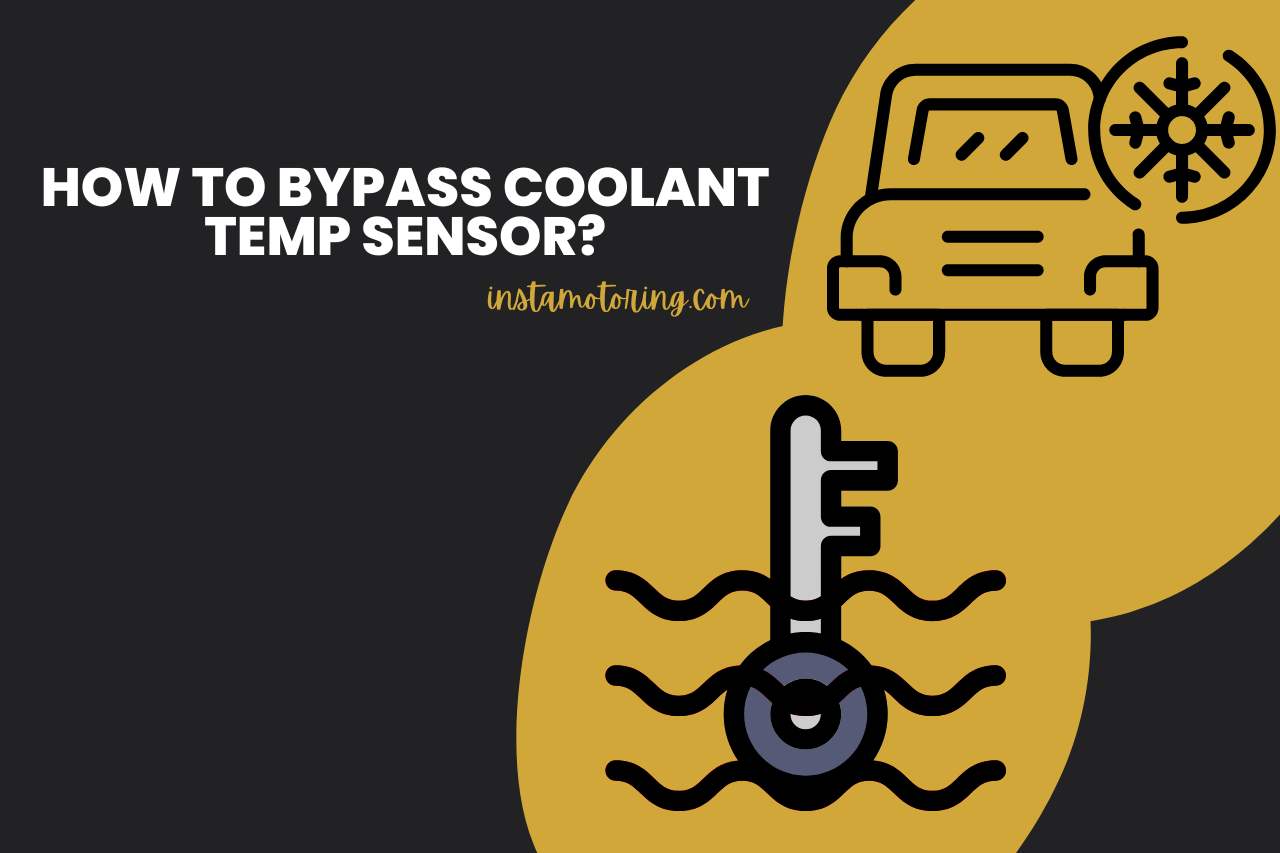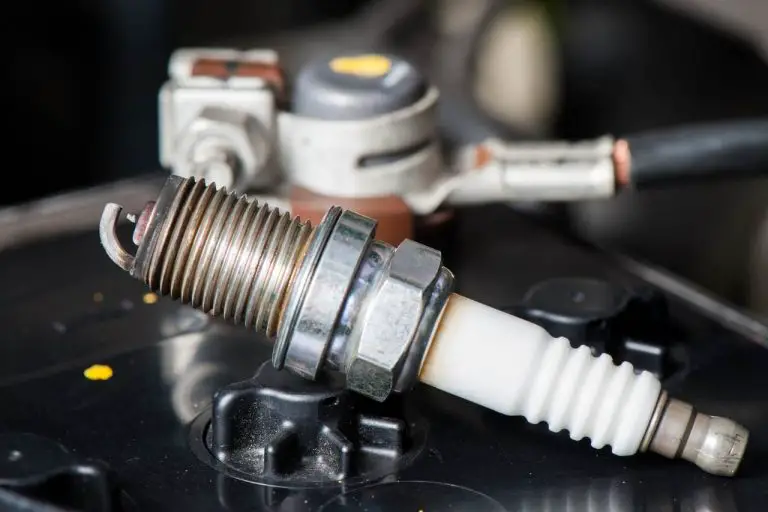How to Bypass Coolant Temp Sensor? (All You Need To Know)
The coolant temperature sensor is essential to keep track of the engine’s temperature and guarantee peak performance. Some people may wonder whether this sensor can be disregarded in some situations. While defective sensors can create annoyance or inaccurate readings, it is necessary to handle the subject carefully. How to bypass the coolant temp sensor? We explore the topic of bypassing the coolant temperature sensor in this article.
What is the Function of the Coolant Temp Sensor in a Vehicle?
Monitoring the engine coolant’s temperature is the task of the coolant temperature sensor in a car.
The sensor is usually found inside the engine and is made to precisely track the coolant’s temperature. The engine control unit receives the electrical signal created by the temperature measurement.
The ECU uses this data to modify the engine’s fuel injection timing and other settings. Coolant temperature affects several factors of engine performance, like fuel efficiency, emissions, and overall engine health.
The ECU can adjust the engine’s operation based on temperature changes by keeping track of the coolant temperature, ensuring effective combustion and peak engine performance.
Why would Someone Consider Bypassing the Coolant Temp Sensor?
There are a few reasons for considering removing the coolant temperature sensor.
Firstly, temporarily bypassing a malfunctioning sensor and impairing a vehicle’s performance may help diagnose the issue or stop further harm until the sensor is replaced.
Second, due to their unique design and tuning specifications, some engines, like those used in race cars or off-road vehicles, might not need a coolant temperature sensor.
Finally, some people could think that bypassing the sensor would increase performance or fuel efficiency. This alteration can be debatable and potentially dangerous. It is significant to remember that maintaining the engine’s correct operating temperature and guaranteeing optimal performance and longevity depend heavily on the coolant temperature sensor.
How To Bypass Coolant Temp Sensor?
These steps can be used to bypass a coolant temperature sensor.
- Negative Battery Cable Disconnected – Disconnect the negative battery cable to ensure your safety and avoid any electrical accidents.
- Drain the Coolant Out – Drain the coolant from the radiator by opening the drain valve or removing the radiator cap.
- Remove the Radiator Hose – Remove the radiator hose from the engine to reach the coolant temperature sensor.
- Remove and Discard the Sensor’s Screw – Find the coolant temperature sensor on the engine block. Then unscrew it and take it out. Turn off the old sensor.
- Put in a New Sensor – Make sure the new coolant temperature sensor is tightened correctly before installing it into the engine block.
- Reconnect the Radiator Hose – Ensure it is correctly connected to the engine before reconnecting.
- Refill the Coolant – Add the necessary amount of coolant to the radiator.
- Another way to bypass the sensor is to use a resistor with the same resistance as the original sensor. Replace the sensor with a resistor that has a resistance that matches and connects it. The sensor can also be removed and replaced with two jumper wires as an alternative.
- Disabling the coolant temperature sensor may affect the vehicle’s engine control system. So, you should carefully weigh the risks and seek professional advice or refer to the manual before you do anything.



What are the Symptoms of a Bad Coolant Temperature Sensor?
A faulty coolant temperature sensor (CTS) can show the following signs.
- Poor Fuel Efficiency – The engine control unit (ECU) may get inaccurate temperature readings from the CTS, resulting in incorrect fuel mixture calculations. It may lead to a decrease in fuel efficiency and an increase in fuel usage.
- Black Smoke from the Engine – An overly rich fuel mixture could result from the CTS giving the ECU inaccurate temperature readings. It might cause the motor to burn through excessive fuel, which would cause the exhaust to produce black smoke.
- Engine Overheating – A malfunctioning CTS may be unable to accurately measure the engine’s temperature. As a result, the ECU can get an incorrect output, which might cause the engine to overheat.
- Check Engine Light – A malfunctioning CTS may activate the Check Engine Light on the car’s dashboard. When the coolant temperature readings are off, the ECU notices them and warns the driver by turning on the warning light.
If you encounter any of these symptoms, it is advised to have your car checked out by an experienced mechanic so that the coolant temperature sensor can be identified and any problems may be fixed.
What Happens If the Coolant Temperature Sensor is Disconnected?
The engine will receive a wrong or no temperature signal if the coolant temperature sensor is disconnected. The engine control unit will consequently believe that the coolant temperature is lower than it actually is.
It will result in a richer fuel mixture being used by the engine, raising the idle speed. The engine makes up for the sensed colder temperature, increasing idle speed by supplying more fuel.
Using the machine without a coolant temperature sensor in good condition might have adverse effects and must be fixed immediately.
How to Trick the Coolant Temp Sensor?
Tricking the coolant temperature sensor is not advisable because doing so could lead to wrong temperature readings and even engine damage. If you decide to proceed, the following broad procedures are occasionally suggested.
- Get the Tools you Need – Gather electrical tape, an ice-filled container, and sometimes a wire (if required for particular techniques).
- Getting Ready the Container – Assure the ice water container is close to the coolant temperature sensor by placing it there.
- Deceive the Sensor – Some techniques involve covering the sensor in electrical tape or arranging the wires in a particular way to change the temperature reading. These methods may vary depending on the sensor’s position and the vehicle type.
- Remove the Wire – Carefully remove the wire if you inserted it during the tricking procedure to prevent any possible harm.
- Test the Outcome – Start the engine. Then watch the temperature gauge or monitor any changes in the engine’s behavior. Be aware that the readings’ accuracy can be compromised.
It must be emphasized once more that attempting to fool the coolant temperature sensor might result in inaccurate readings of the engine’s temperature and possible engine damage. It is highly recommended to address any underlying concerns adequately. If necessary, seek professional help.
Watch this one,
Video Credits – CarsNToys
You May Also Like
- Can a Catalytic Converter Unclog Itself? Truth about Catalytic Converter Clogs!
- Leaking Thermostat Housing – (Function, Leak Causes & Cost)



My name is James, I work as an Automotive Designer with 9 years of experience. I also work as a mechanic and vehicle inspector. I love deciphering complicated car exteriors and interiors and resolving fluid and oil troubles. InstaMotoring.com is here to help you troubleshoot your car with dependable and expert help.







